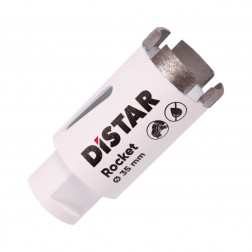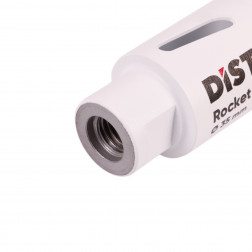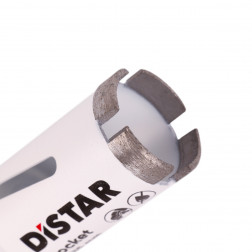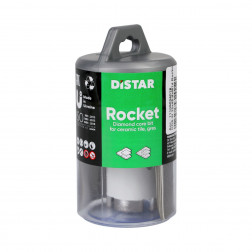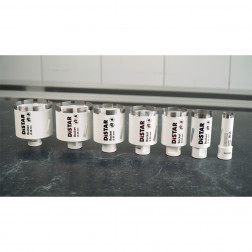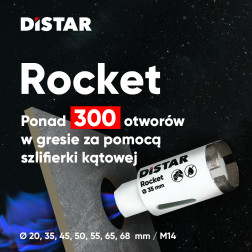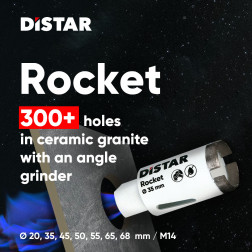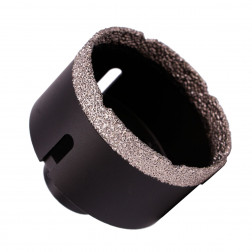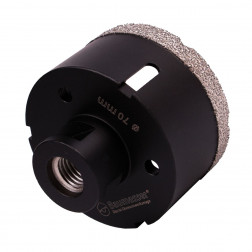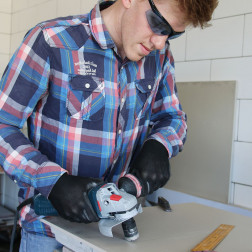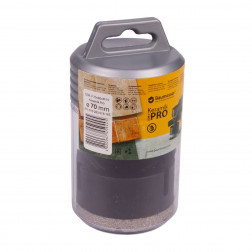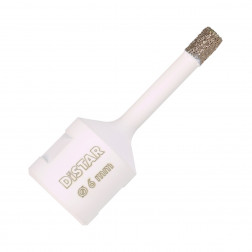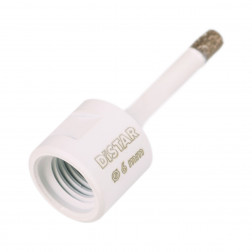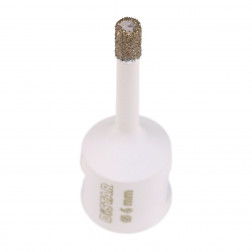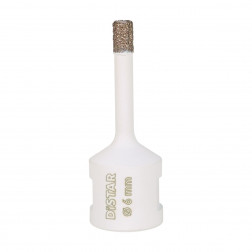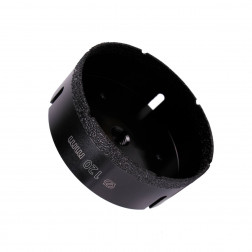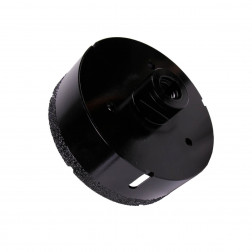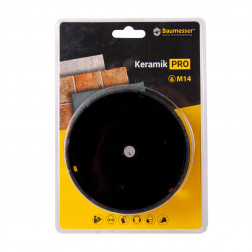Core drills for Angle grinder
4 modelsDiamond Drill Bits for Angle Grinders
If you’re dealing with drilling various types of holes in a finished room or want to minimize waste when drilling tiles or porcelain stoneware, you can use an angle grinder instead of a drill or screwdriver.
Drilling holes with an angle grinder doesn’t require water supply, as diamond drill bits for angle grinders are designed for dry operation.
Apart from avoiding wet slurry, one advantage of drilling with this type of power tool is the high speed of processing porcelain stoneware of any hardness, thanks to the large number of cutting edges on the diamond drill bit's surface.
Most angle grinders are quite suitable for this kind of work, but when choosing one, you should pay attention to two important parameters:
1. "Device Power": Many angle grinders are available with power ratings from 0.5 kW to 1.8 kW. When drilling large holes with a diameter of 100-120 mm in porcelain or ceramic tiles, these bits are heavy and heavily load the angle grinder’s motor. Therefore, it’s not practical to use low-power machines. Ideally, you should have a medium-power tool with at least 0.8 kW, though high-power motors starting from 1.2 kW are recommended.
2. "Speed Adjustment": Different diamond bit diameters require different drilling speeds, so it’s very important for angle grinders to have speed control. Drilling all holes at a single speed significantly reduces the service life of diamond consumables. Recommended speeds for different bit diameters are always provided by the manufacturer.
"Baumesser" offers a wide range of ceramic drill bits for angle grinders, all manufactured using vacuum sintering technology. This technology applies a single diamond layer to the bit's body, resulting in relatively short service life.
The main advantage of this technology is the large number of diamonds on the surface, providing very high drilling speed, even for the hardest types of porcelain tiles. Available diameters range from 6 to 120 mm.
It's essential to note that each diamond drill bit for angle grinders is designed exclusively for dry use, as the electrical safety rating of these tools doesn’t allow work with a cooling liquid. Dry drilling does produce a significant amount of dust.
To address this, "Mechanic" offers a special dust collection attachment for drilling – "DrillDuster 2.0". This attachment adheres perfectly to both horizontal and vertical surfaces due to the vacuum it creates. The vacuum is maintained by a special seal that can easily be replaced if damaged.
Sometimes, you may encounter non-standard hole sizes when drilling. For example, you might only have a 16 mm and 35 mm diamond drill bit but need to create a 20 mm hole. To achieve a 20 mm hole, you would first drill with the smaller bit and then expand it using a special "Contour Pro 25/10" cup wheel.
This cup wheel also mounts on an angle grinder, offering high processing speed and a special latch for smoothing the edges of the expanded hole. With this tool, it’s possible to enlarge holes from 10 mm. For expanding larger holes, there’s the "Contour Pro 50" cup wheel. With this product, you can enlarge holes from 50 mm.
Both of these cup wheels have very high processing speed, even for the hardest porcelain, due to the high concentration of diamonds on their surface.
On the "DISTAR" website, you can easily find the diamond drill bit you need or purchase a kit including both the drill bit and a cup wheel to help expand holes to the required size.
Additionally, dust collection attachments for drilling and tools to help mark future holes on tiles are always available.
